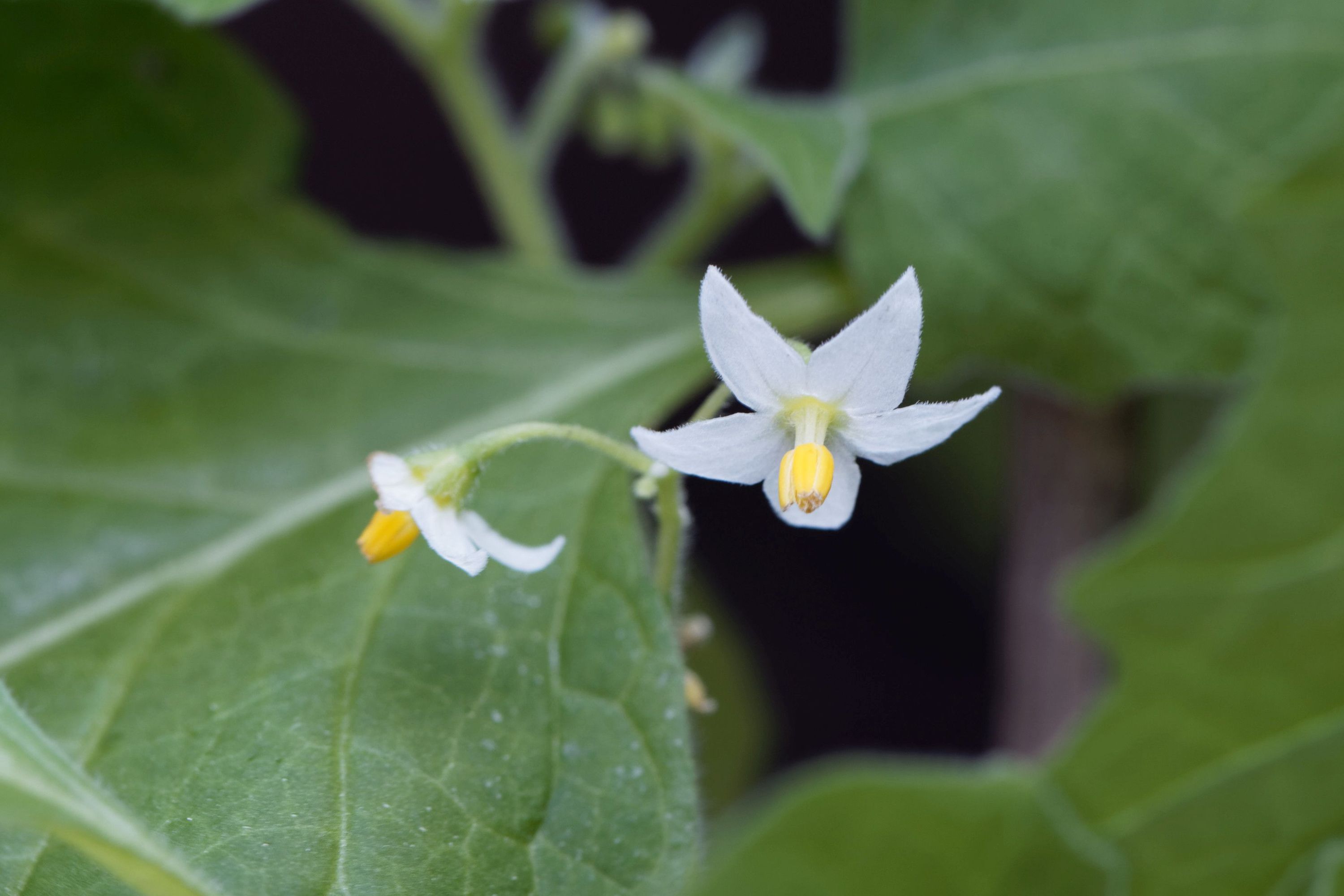Umsobo
(Solanum retroflexum)

Description
Solanum retroflexum, commonly known as umsobo (isiZulu), wonderberry or sunberry, is a historic heirloom fruiting shrub. Both common names are also used for the European black nightshade (Solanum nigrum) in some places, particularly where the latter species has been introduced, so care must be taken to distinguish them. It is sometimes called garden huckleberry, but that properly refers to the S. scabrum described by Philip Miller. Its old scientific name that is still often seen, Solanum × burbankii, indicates a plant of hybrid origin. It was supposedly bred by Luther Burbank in the early 1900s as a hybrid of S. villosum and S. guineense but in fact S. retroflexum is a proper species of its own, while the supposed hybrid combination would not be viable due to different ploidy of S. guineense and S. villosum. Plants are compact, typically growing to a height of 12–24 in (30–61 cm), and may fruit at sizes as small as 4 in (10 cm). The plant produces diminutive, dark blue-purple edible fruits that are bland in flavor and often combined with sugar in desserts. Green (unripe) fruits may be poisonous. The wonderberry shrub is an extremely easy-to-grow plant which is grown similarly to tomatoes. Seeds are sown in the summer in full or part sun. Fruit can be expected in 75 days. Solanum is a large and diverse genus of flowering plants, which include three food crops of high economic importance: the potato, the tomato and the eggplant (aubergine, brinjal). It also contains the nightshades and horse nettles, as well as numerous plants cultivated for their ornamental flowers and fruit. Solanum species show a wide range of growing habits, such as annuals and perennials, vines, subshrubs, shrubs, and small trees. Many formerly independent genera like Lycopersicon (the tomatoes) and Cyphomandra are now included in Solanum as subgenera or sections. Thus, the genus today contains roughly 1,500–2,000 species. The generic name was first used by Pliny the Elder (AD 23–79) for a plant also known as strychnos, most likely S. nigrum. Its derivation is uncertain, possibly stemming from the Latin word sol, meaning "sun", referring to its status as a plant of the sun. The species most commonly called nightshade in North America and Britain is Solanum dulcamara, also called bittersweet or woody nightshade. Its foliage and egg-shaped red berries are poisonous, the active principle being solanine, which can cause convulsions and death if taken in large doses.
Taxonomic tree:







